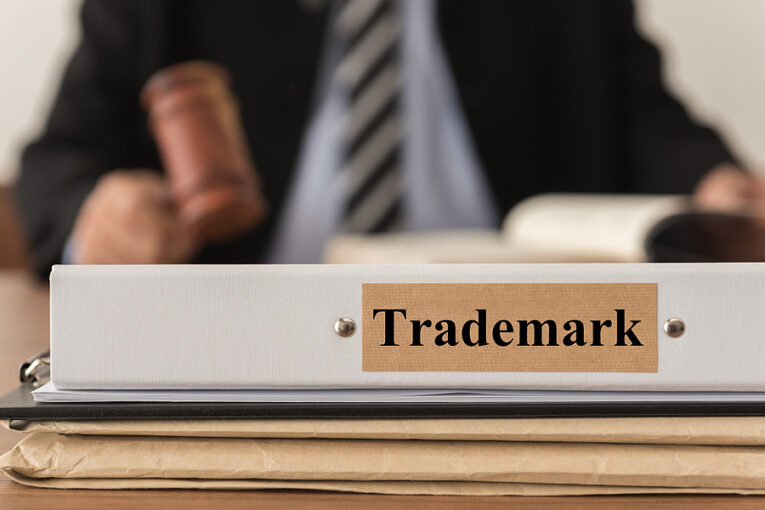Navigating the Complex World of Trademark Lawsuits
Trademark lawsuits are often unseen battles that have far-reaching impacts on brands and consumers alike. When trademarks come under fire from infringers, legal action must be swift and definitive to protect intellectual property. This high-stakes landscape demands nuanced strategies from legal teams to safeguard economic interests and preserve brand integrity.
What exactly is a trademark lawsuit?
A trademark lawsuit is initiated when a trademark owner alleges unauthorized use of their legally protected mark. The plaintiff trademark holder files a complaint claiming infringement that could confuse consumers or damage the brand. Defendants may include any party that used the trademark without permission, whether intentionally or unintentionally.
Trademark lawsuits tend to be complex, high-value legal affairs. The plaintiff must conclusively demonstrate ownership of the trademark in question and provide evidence of infringing usage. Defendants may argue fair use, parody, or other defenses. With consumer perceptions and economic damages at stake, trademark lawsuits have sweeping implications for business interests on both sides of the court.
Why do trademark lawsuits happen?
Like fingerprints, no two trademarks are identical. However, similarities between marks may cause consumer confusion, which trademark law aims to avoid. Trademark lawsuits often emerge when:
- A company adopts a mark too similar to a registered trademark, intentionally or not.
- Goods or services carry a mark likely to confuse customers about the source brand.
- Brands expand into new sectors, leading to conflicts with existing trademarks.
- Counterfeiting, cybersquatting, or bait-and-switch strategies all compromise trademarks.
- Parody trademarks cross the line from commentary to infringement (a subjective distinction).
“Conflicts between trademarks are commonplace in the business world. Legal mechanisms exist to balance rights; the law recognizes that no trademark holder has a monopoly over common words or imagery. However, distinctly similar marks can undermine consumer clarity about brands. Trademark lawsuits are crucial tools to parse out these complex dilemmas.” Jane Smythe, Trademark Attorney
While coming out on top in a trademark lawsuit has clear financial incentives, the core purpose is to eliminate confusion that could erode brand identity and loyalty. Trademarks condense everything a business represents into a single, identifiable mark. Infringement leaves this mark—and the interests behind it—vulnerable.
Inside Trademark Lawsuits: Key Steps and Considerations
So what happens after a business decides to pursue trademark litigation? Lawsuits generally progress through distinct phases, each introducing new dimensions, evidence, and stakes into the mix.
Getting Started: Filing a Complaint
The first move belongs to the plaintiff, the trademark owner, who sets proceedings in motion by lodging an official complaint. This complaint is submitted to the relevant court or trademark office, specifying:
- Details about the trademark itself
- Alleged examples of infringement
- Types of relief being sought
Digital tools like the Trademark Electronic Application System (TEAS) ease trademark registration and disputes. However, human expertise remains invaluable. Trademark attorneys adeptly steer clients through initial filings, framing the case strategically from the very start.
After receiving notice, the defendant is given a window to respond with objections or counter-arguments. Failure to reply could result in a default judgment against them.
Building Your Case: Discovery and Motions
With filings complete, adversarial parties gather evidence to back up their claims in a process called discovery. Relevant information is extracted through:
- Interrogatories: Written questions submitted to the opposing party
- Depositions: Interviews conducted under oath
- Requests for documentation: Exchange of letters, emails, invoices, etc. related to the dispute
Armed with expanded facts, attorneys file motions at this stage to corner key legal advantages, limit arguments or evidence, or even seek an early resolution. Judges rule on the outcomes of different motions, shaping the playing field.
Settlement talks also commence as risks and expenses come into focus. However, with tensions running high, most proceed to trial.
Moment of Truth: Trial and Judgment
In trademark litigation, bench trials with only a judge are more common than jury trials. Both sides present arguments and witnesses, undergo intense cross-examination, and submit evidence. The verdict delivered at the climax of trial proceedings includes:
- Clear determination of whether infringement transpired
- Remedies for the prevailing party
Remedies in trademark lawsuits often require extensive calculations, with nuances on display in high-profile cases like Adidas AG v. Payless Shoesource, Inc.. Damages may include:
- Injunctive relief: Court orders halting ongoing infringement
- Monetary damages: Financial compensation for lost profits and reputational harm
- Disgorgement of profits: Surrendering of revenues gained from infringement
- Corrective advertising: Campaigns to eliminate ongoing customer confusion
- Attorney’s fees: Awards covering plaintiffs’ legal costs
By prioritizing consumer clarity and fairness, courts craft intricate remedies targeting different impacts of infringement. The final ruling aims to make the victorious party whole again.
Key Factors That Shape Trademark Lawsuits
Trademark lawsuits have far-reaching business implications, so what factors most directly steer outcomes? Savvy legal teams focus on strengthening three key areas to build an advantage before judges or juries.
1. Distinctiveness of the Trademark
Not all trademarks receive equal treatment under the law. Strength and distinctiveness of the mark itself directly shape decisions. Trademarks are categorized into one of five tiers based on their underlying distinctiveness:
- Fanciful – Invented terms like Kodak
- Arbitrary – Common words applied in an unfamiliar context eg. Apple
- Suggestive – Imagery that hints at a concept, like Microsoft
- Descriptive – Describes a good/service eg. Best Buy
- Generic – Names or terms customary to an industry
The strongest marks ranked as fanciful or arbitrary receive broader protection and rights. Evidence showing a suggestive or descriptive mark acquired distinctiveness through commercial use also boosts perceptions of strength.
Generally, the more distinctive the trademark, indicating clear source identification by consumers, the more likely infringement claims succeed.
2. Proving Confusion and Economic Harm
At its core, trademark law aims to avoid public confusion about brands or products. So evidence demonstrating a likelihood of confusion carries immense influence. Consumer research, documented instances of misdirected inquiries, or similarity assessments are leveraged to prove confusing overlaps.
Closely related is economic harm—does the infringement impact revenues and reputation? Demonstrating damage to goodwill makes a case even more compelling. Plaintiffs marshal sales and marketing data, focusing on diversion of business or erosion of brand equity.
3. Scope of Usage and Efforts to Enforce Rights
Judges also assess how trademarks are actually used in commerce. Symbols actively used across channels signal strong rights, while those only nominally used invite challenges. Evidence displaying consistent, rigorous usage strengthens claims of infringement.
Moreover, efforts to monitor markets for infringement and consistently enforce rights increase sympathy. Plaintiffs seen as lax, delayed, or sporadic in enforcing trademarks may see arguments weakened in litigation contexts.
In essence, using and vigilantly protecting trademarks are vital underpinnings to winning infringement lawsuits.
With these key factors in mind, trademark holders can set up domino effects that tip proceedings in their favor long before courtroom arguments even begin!
Real-World Lessons from Major Trademark Lawsuits
Trademark lawsuits between corporate titans grab headlines while establishing influential precedents that all businesses can learn from. Examining milestone cases provides valuable perspectives on nurturing trademarks and avoiding infringements.
Starbucks Corp. v. Wolfe’s Borough Coffee Inc.
This dispute emerged over Wolfe Brands’ “Charbucks Blend” poking fun at Starbucks’ dark roast coffee. Starbucks alleged infringement and dilution of its famous mark. However, the court upheld Charbucks as a parody protected under nominations of fair use. Takeaway? Humor itself does not equal infringement, even with famous marks. However, parody marks should clearly convey their satirical nature and not misrepresent themselves as the real brand.
Nike Inc. v. Skechers USA Inc.
Athletic shoemaker Skechers was handed $137 million in damages for infringing on the iconic Nike Air Max mark with confusingly similar shoes. The court ruled Skechers aimed to capitalize on Air Max’s reputation and unique appearance. This case spotlights the need for drastic visual differentiation, even across niche product segments!
Cuisinarts Inc. v. Robot-Coupe USA
Kitchen appliance rivals Cuisinarts and Robot-Coupe dueled over similar model names and trade dress. However, Cuisinart’s trademarks covered kitchen goods generally, while Robot-Coupe stuck to commercial equipment. This limited market gap enabled Robot-Coupe to ultimately escape infringement claims. Clearly delineating trademark bounds provides crucial wiggle room!





